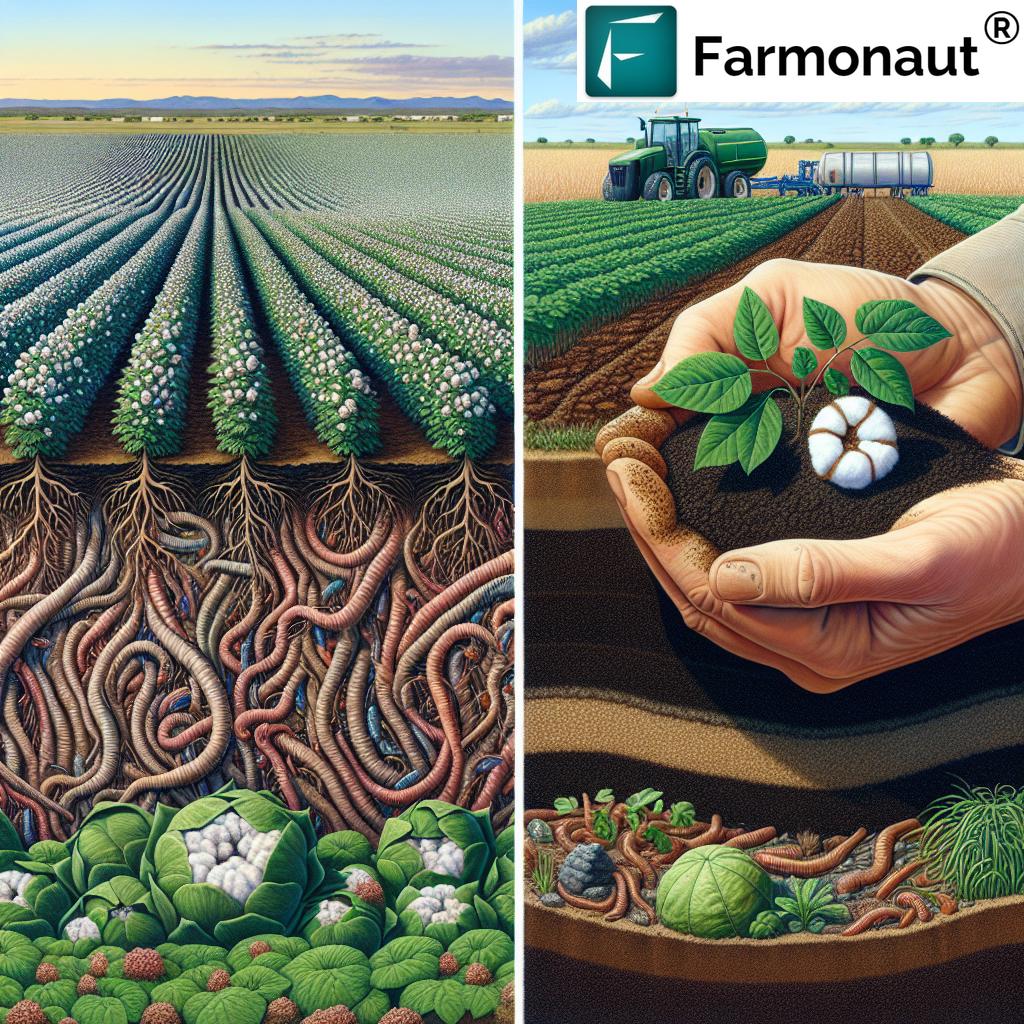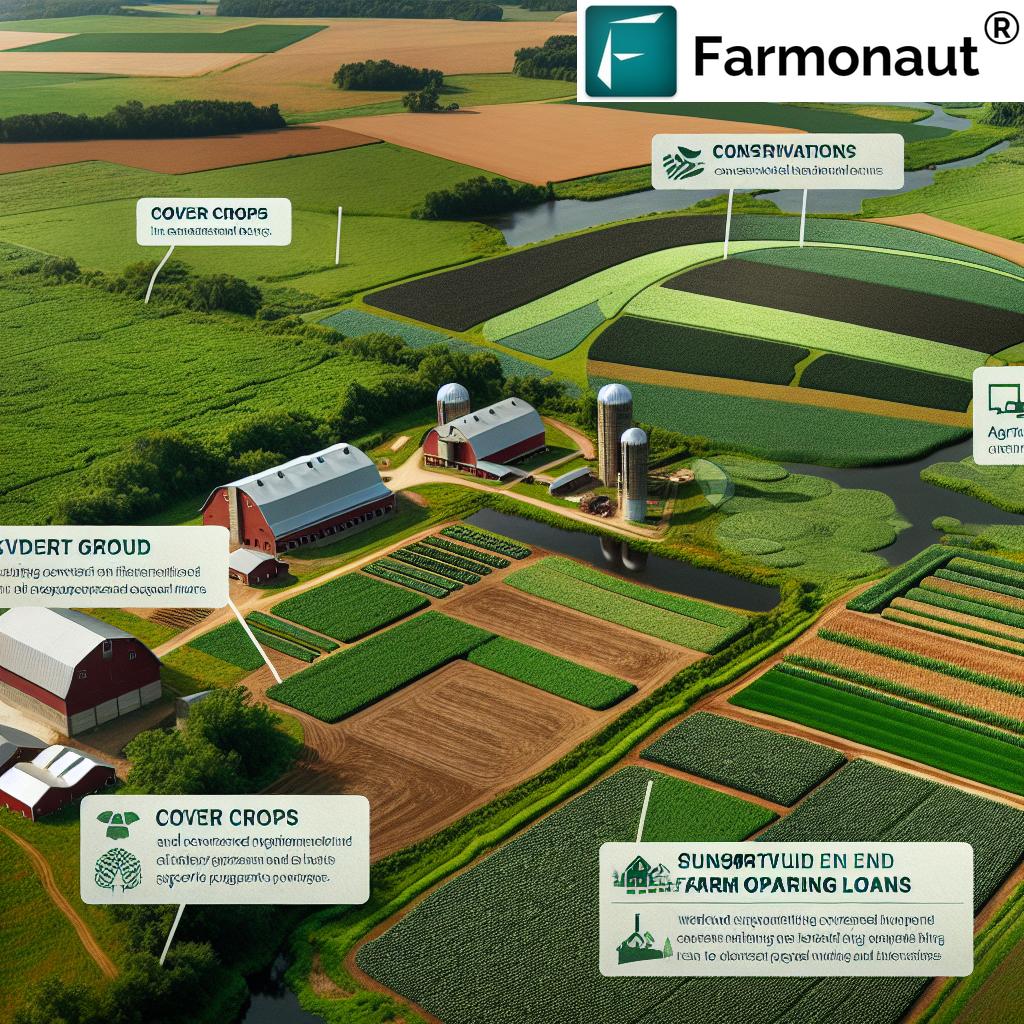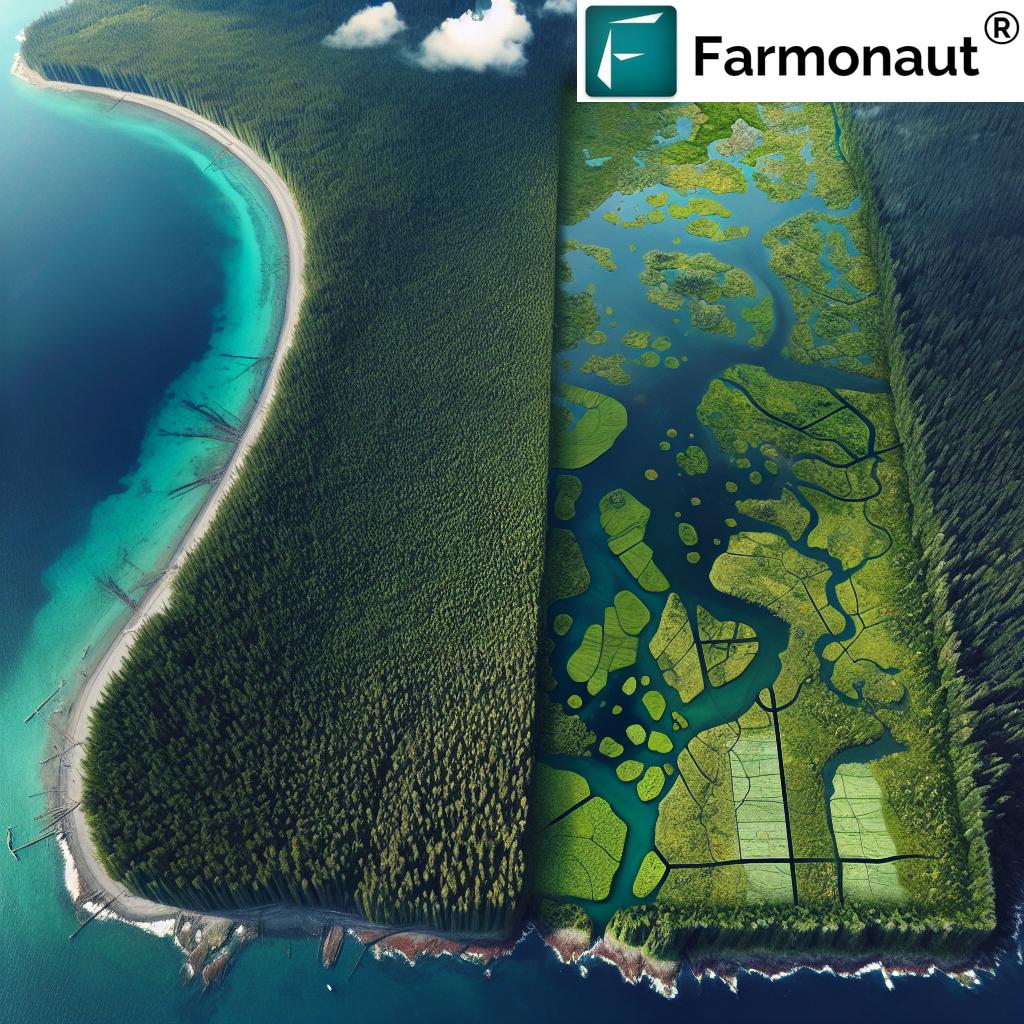Protecting Florida’s Crystal River: A Sustainable Approach to Waterway Conservation and Manatee Habitat Preservation
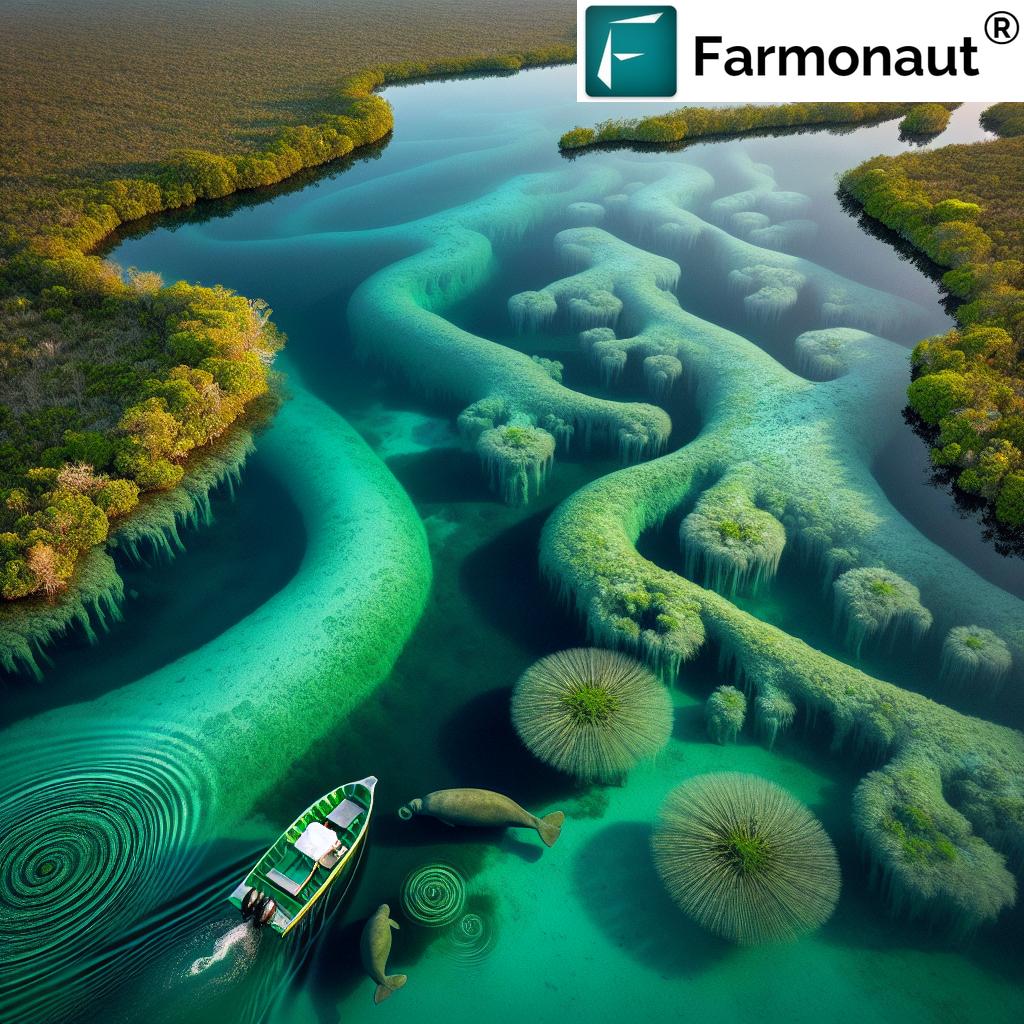
“Crystal River’s ecosystem supports over 70 springs, making it one of Florida’s largest spring systems.”
As we embark on this eye-opening journey through the Crystal River ecosystem, we’re reminded of the critical importance of protecting Florida waterways. The serene beauty of Kings Bay and its surrounding areas belies the complex challenges facing this unique aquatic environment. In this comprehensive exploration, we’ll delve into the multifaceted efforts underway to preserve and restore these vital waterways, with a particular focus on manatee habitat protection and sustainable water management practices.
Understanding the Crystal River Ecosystem
Crystal River, nestled in Citrus County, Florida, is renowned for its crystal-clear springs and the diverse wildlife they support. At the heart of this ecosystem lies Kings Bay, a spring-fed bay that serves as a crucial habitat for Florida’s beloved manatees. However, this delicate balance is under threat from various factors, including:
- Erosion along the shoreline
- Excessive algae growth
- Reduction in seagrass coverage
- Water quality degradation
- Impacts from hurricanes and extreme weather events
To address these challenges, a coalition of local stakeholders, environmental organizations, and government agencies has come together to implement comprehensive conservation strategies. Their goal? To restore and protect the Crystal River ecosystem for future generations.
The Impact of Human Activity on Florida’s Waterways
Human activities have significantly contributed to the degradation of Florida’s aquatic environments. Some key factors include:
- Fertilizer Runoff: Excessive use of fertilizers in agriculture and residential areas leads to nutrient pollution in waterways, promoting algal blooms and reducing water quality.
- Urban Development: As Florida’s population grows, increased construction and urban sprawl contribute to habitat loss and increased pollution.
- Coastal Erosion: Natural processes exacerbated by human activities like dredging and construction of seawalls can accelerate shoreline erosion.
- Septic System Leakage: Faulty or outdated septic systems can leak contaminants into groundwater and nearby water bodies.
To combat these issues, we must adopt sustainable practices in our daily lives and support broader conservation initiatives.
Kings Bay Conservation: A Multifaceted Approach
The efforts to protect and restore Kings Bay involve a diverse range of strategies:
- Water Quality Monitoring: Regular testing and analysis of water parameters to track improvements and identify areas of concern.
- Seagrass Restoration: Planting native seagrass species to improve habitat quality for manatees and other aquatic life.
- Shoreline Stabilization: Implementing natural and engineered solutions to prevent further erosion and protect coastal habitats.
- Stormwater Management: Upgrading infrastructure to reduce pollutant-laden runoff entering the bay.
- Public Education: Engaging local communities in conservation efforts through workshops, tours, and outreach programs.
These initiatives demonstrate the importance of a holistic approach to waterway conservation, addressing both immediate concerns and long-term sustainability goals.
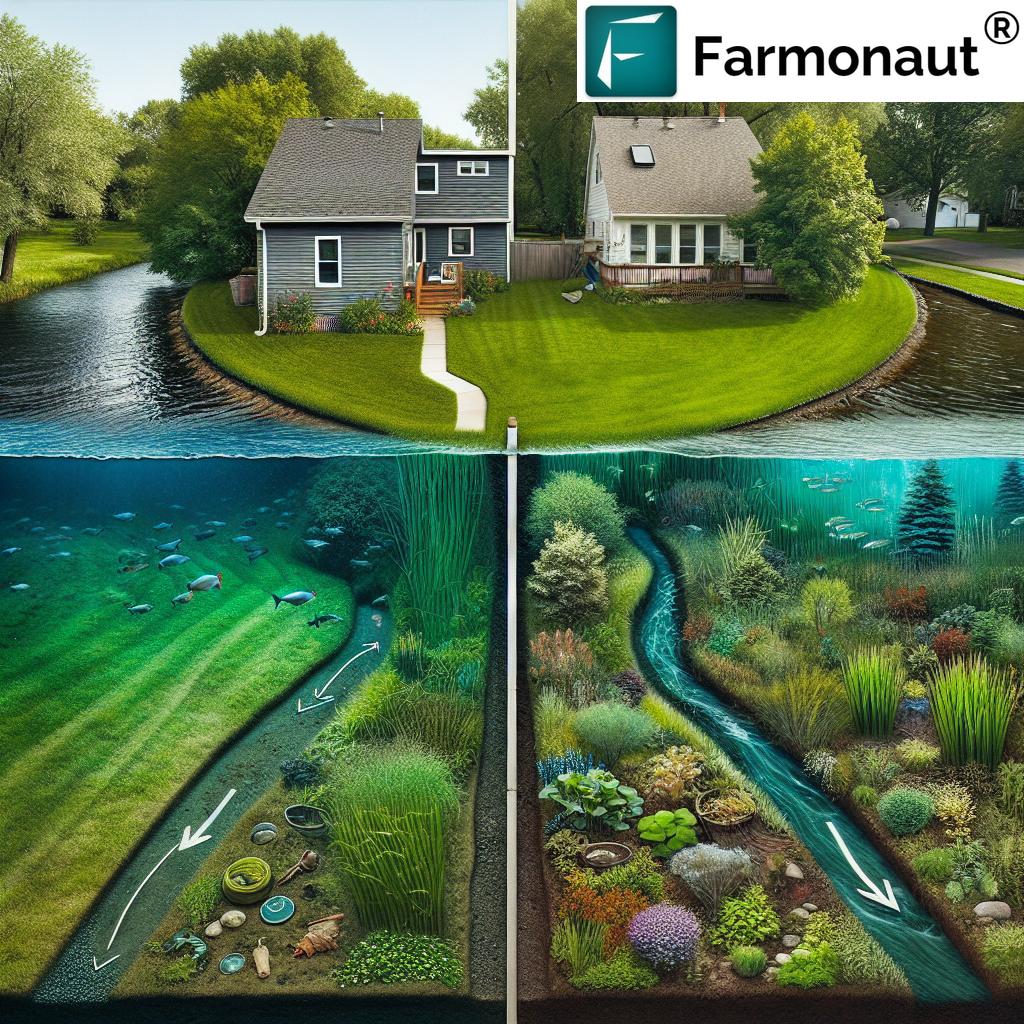
Manatee Habitat Protection: A Priority for Crystal River
“Florida’s manatee population has increased by 500% since the 1970s, largely due to conservation efforts in areas like Crystal River.”
The Crystal River area is renowned for its importance to Florida’s manatee population. These gentle giants rely on the warm, spring-fed waters as a refuge during colder months. However, the loss of seagrass, their primary food source, poses a significant threat to their survival. Conservation efforts focused on manatee habitat protection include:
- Establishing protected zones where boating and other activities are restricted
- Implementing strict regulations on water activities to minimize disturbance to manatees
- Conducting regular health assessments and rescues of injured or distressed manatees
- Restoring and protecting seagrass beds to ensure adequate food sources
These efforts have contributed to the remarkable recovery of Florida’s manatee population, showcasing the positive impact of dedicated conservation initiatives.
The Role of Technology in Waterway Conservation
Advancements in technology play a crucial role in modern conservation efforts. For instance, Farmonaut’s crop plantation and forest advisory services utilize satellite imagery and AI to monitor vegetation health and land use changes. While primarily focused on agricultural applications, these tools can be adapted to track coastal vegetation and detect changes in waterway ecosystems.
Other technological applications in waterway conservation include:
- Remote sensing for water quality monitoring
- GPS tracking of manatee movements
- Underwater drones for seagrass surveys
- Advanced water treatment technologies for pollution reduction
By leveraging these innovations, conservationists can make more informed decisions and implement targeted strategies for ecosystem protection.
Sustainable Water Management: A Key to Florida’s Eco-Tourism
Florida’s economy relies heavily on its natural resources, with eco-tourism playing a significant role. The Crystal River area, in particular, attracts thousands of visitors each year, drawn by the opportunity to observe manatees in their natural habitat. Sustainable water management is crucial for preserving these attractions and ensuring the long-term viability of Florida’s eco-tourism industry.
Key aspects of sustainable water management in Crystal River include:
- Implementing strict water usage regulations to prevent over-extraction from springs
- Promoting water-efficient practices in agriculture and urban areas
- Investing in green infrastructure to manage stormwater runoff naturally
- Restoring natural water flow patterns disrupted by development
These efforts not only protect the environment but also safeguard the economic benefits derived from Florida’s unique aquatic ecosystems.
Community Involvement in Florida Springs Restoration
The success of conservation efforts in Crystal River and beyond depends heavily on community involvement. Local residents, businesses, and visitors all have a role to play in protecting Florida’s waterways. Some ways individuals can contribute include:
- Practicing responsible landscaping to reduce fertilizer runoff
- Participating in local clean-up events and citizen science projects
- Supporting eco-friendly businesses and tour operators
- Advocating for stronger environmental protection policies
By fostering a sense of stewardship among community members, we can create a lasting impact on the health of Florida’s springs and rivers.
The Interconnected Nature of Florida’s Waterways
Understanding the interconnected nature of Florida’s waterways is crucial for effective conservation. What happens in one area can have far-reaching effects on ecosystems hundreds of miles away. This interconnectedness is particularly evident in the following ways:
- Groundwater pollution in inland areas can impact coastal springs
- Changes in water flow upstream can affect estuarine habitats downstream
- Nutrient pollution in one region can lead to algal blooms in distant water bodies
Recognizing these connections underscores the need for a comprehensive, statewide approach to water conservation and management.
Challenges in Preventing Water Pollution and Coastal Erosion
Despite ongoing efforts, several challenges persist in the fight against water pollution and coastal erosion in Florida:
- Climate Change: Rising sea levels and increased storm intensity exacerbate coastal erosion and saltwater intrusion into freshwater systems.
- Population Growth: Florida’s growing population puts additional pressure on water resources and increases the risk of pollution.
- Agricultural Practices: Balancing the needs of Florida’s agricultural sector with water conservation goals remains a complex issue.
- Funding Constraints: Securing adequate funding for long-term conservation projects can be challenging.
Addressing these challenges requires ongoing collaboration between policymakers, scientists, and community stakeholders.
Innovative Solutions for Spring Restoration
As we look to the future of Florida springs restoration, innovative solutions are emerging to complement traditional conservation methods:
- Bioremediation: Using natural processes to remove pollutants from water and soil
- Artificial Wetlands: Creating engineered wetlands to filter pollutants and provide habitat
- Smart Water Management: Implementing IoT devices for real-time monitoring and management of water resources
- Sustainable Agriculture: Promoting precision farming techniques to reduce water usage and fertilizer runoff
These innovative approaches, combined with ongoing conservation efforts, offer hope for the long-term health of Florida’s springs and rivers.
The Economic Impact of Healthy Waterways
Preserving Florida’s waterways isn’t just an environmental imperative; it’s also crucial for the state’s economy. Healthy aquatic ecosystems contribute to the economy in several ways:
- Supporting a thriving tourism industry
- Sustaining commercial and recreational fishing
- Providing natural flood protection
- Enhancing property values in waterfront areas
By investing in waterway conservation, we’re not only protecting nature but also safeguarding Florida’s economic future.
Florida’s Crystal River Ecosystem Health Indicators
| Year | Location | Nitrate Levels (mg/L) | Phosphate Levels (mg/L) | Seagrass Coverage (acres) | Algae Presence (%) | Manatee Population Estimate |
|---|---|---|---|---|---|---|
| 2000 | Kings Bay | 0.40 | 0.05 | 900 | 10 | 250 |
| 2010 | Kings Bay | 0.55 | 0.08 | 750 | 25 | 350 |
| 2020 | Kings Bay | 0.35 | 0.06 | 800 | 15 | 400 |
| 2000 | Three Sisters Springs | 0.30 | 0.03 | 50 | 5 | 100 |
| 2010 | Three Sisters Springs | 0.45 | 0.06 | 40 | 15 | 150 |
| 2020 | Three Sisters Springs | 0.25 | 0.04 | 45 | 10 | 200 |
This table illustrates the changes in key environmental indicators over time in Crystal River’s ecosystem. While some improvements are evident, ongoing conservation efforts are crucial to maintain and enhance these positive trends.
The Role of Technology in Agricultural Water Management
While our focus has been on Crystal River, it’s important to recognize the role of sustainable agriculture in overall water conservation efforts. Farmonaut’s carbon footprinting service helps farmers and agribusinesses monitor their environmental impact, including water usage. By optimizing irrigation and reducing chemical inputs, farmers can significantly decrease their water footprint and minimize runoff that could potentially impact nearby waterways.
Similarly, Farmonaut’s fleet management solutions can help agricultural operations optimize their logistics, potentially reducing fuel consumption and associated pollutants that could indirectly affect water quality through atmospheric deposition.
Future Outlook for Crystal River and Florida’s Waterways
As we look to the future, the outlook for Crystal River and Florida’s waterways is cautiously optimistic. Continued dedication to conservation efforts, coupled with advancements in technology and growing public awareness, offers hope for long-term ecosystem health. Key areas of focus for the future include:
- Expanding seagrass restoration efforts
- Implementing more stringent water quality standards
- Increasing funding for springs restoration projects
- Enhancing public education programs on water conservation
- Developing innovative solutions for stormwater management
By maintaining our commitment to these goals, we can ensure that Florida’s unique aquatic ecosystems continue to thrive for generations to come.
Conclusion: A Call to Action for Florida’s Waterways
The protection of Florida’s Crystal River and its surrounding waterways is a responsibility we all share. From local residents to visitors, from policymakers to business owners, everyone has a role to play in preserving these vital ecosystems. By understanding the challenges, supporting conservation efforts, and making sustainable choices in our daily lives, we can contribute to the long-term health of Florida’s aquatic environments.
As we’ve seen throughout this exploration, the issues facing Crystal River are complex and interconnected. However, the dedicated efforts of various stakeholders and the implementation of innovative solutions offer hope for the future. By continuing to prioritize waterway conservation and manatee habitat protection, we can ensure that the crystal-clear springs of Florida remain a source of wonder and inspiration for generations to come.
Let us all commit to being stewards of these precious resources, taking action in our communities and supporting broader conservation initiatives. Together, we can protect Florida’s waterways and preserve the unique beauty and biodiversity of places like Crystal River for the benefit of both wildlife and humans alike.
FAQ Section
Q: What are the main threats to Crystal River’s ecosystem?
A: The main threats include erosion, excessive algae growth, reduction in seagrass coverage, water quality degradation, and impacts from hurricanes and extreme weather events.
Q: How can individuals contribute to protecting Florida’s waterways?
A: Individuals can contribute by practicing responsible landscaping, participating in local clean-up events, supporting eco-friendly businesses, and advocating for stronger environmental protection policies.
Q: Why are manatees important to Crystal River?
A: Manatees are a keystone species in Crystal River, attracting eco-tourism and playing a crucial role in the local ecosystem. Their presence indicates the health of the waterways and seagrass beds.
Q: What role does technology play in waterway conservation?
A: Technology plays a crucial role through remote sensing for water quality monitoring, GPS tracking of wildlife, underwater drones for surveys, and advanced water treatment technologies for pollution reduction.
Q: How does protecting Florida’s waterways benefit the economy?
A: Healthy waterways support tourism, sustain commercial and recreational fishing, provide natural flood protection, and enhance property values in waterfront areas, all contributing to Florida’s economy.
Earn With Farmonaut:
Earn 20% recurring commission with Farmonaut’s affiliate program by sharing your promo code and helping farmers save 10%. Onboard 10 Elite farmers monthly to earn a minimum of $148,000 annually—start now and grow your income!
Learn More About Earning With Farmonaut
For more information on Farmonaut’s agricultural technology solutions, visit our API page or check out our API Developer Docs.





